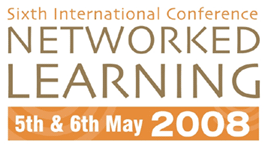

From design to evaluation of scripted networked collaborative learning environments
Yannis Dimitriadis
GSIC/EMIC research group, Department of Signal Theory, Communications
and Telematics Engineering, University of Valladolid, Spain, yannis@tel.uva.es
Abstract
This plenary talk focuses on an integrated view of design and evaluation of CSCL (Computer Supported Collaborative Learning) tools, which can be used in authentic case studies.
During the last two decades a considerable effort has been dedicated in analyzing the potential and effectiveness of the approach of active and participatory methods of learning, especially in the context of higher education and the process of acquisition of high-level competencies. Evidence from numerous research projects has shown that these approaches can be effective, although more authentic case studies have to be conducted.
Collaborative learning considers that learning and knowledge acquisition can be considerably enhanced through social interactions in small or large groups. Moreover, scripting as a legacy approach from the instructional design tradition can increase the chances of effective learning, as compared to free collaboration. Finally, computer support for scripted collaborative learning environments has shown to provide new functionalities, such as shared representations, distance access and communication, or even hybrid used of computational and physical artefacts.
This talk considers that the complete lifecycle of a scripted CSCL environment in an authentic study has to be considered. Fragmentation of the roles and responsibilities of the different actors (instructional designers, technology and service providers and educational practitioners) does not allow for a multi-disciplinary holistic view of such a complex domain.
Thus, an integrated vision of scripted CSCL environments is provided
that takes into account the existing literature, standards, as well as
the specific artefacts or research results of the GSIC/EMIC group (http://gsic.tel.uva.es/index.php?lang=en).
This vision advocates for a service-oriented approach and a special emphasis
on the needs of the practitioners who are the final responsible for taking
all these approaches to the real educational life. On the one hand, tools
such as Collage, allow for a design process based on patterns for collaborative
learning flows, i.e. good practices that have shown their validity in
many cases. Additionally, enactment architectures such as Gridcole enable
the interpretation of learning designs compliant to standards and produced
by authoring tools, such as Collage. Ontology-based tools, such as Ontoolsearch
provide the opportunity to educators for a selection of the most adequate
services/tools offered internally or externally to one institution, and
therefore a flexible tailorable learning system. Finally, interaction
analysis aware architectures permit the collection of indicators for mirroring
or scaffolding of the learning and assessment activities. This vision
is complemented by data extracted from a series of authentic case studies.
| About NLC |
2008 Conference Papers
| Conference Committee| Keynote
Speakers
| Papers from previous NL conferences |Research Seminars| Current Conference
| Sponsors | Contact
|
